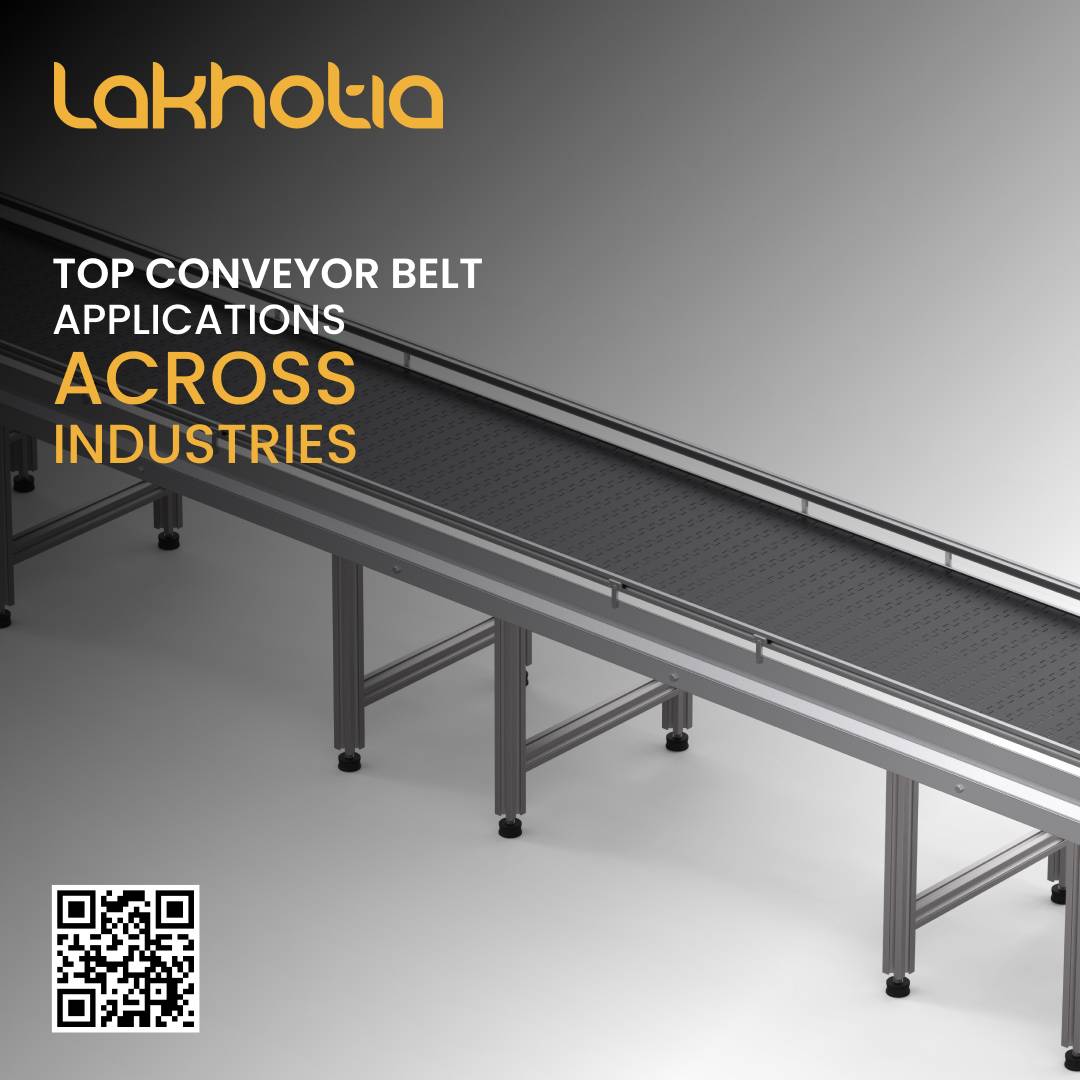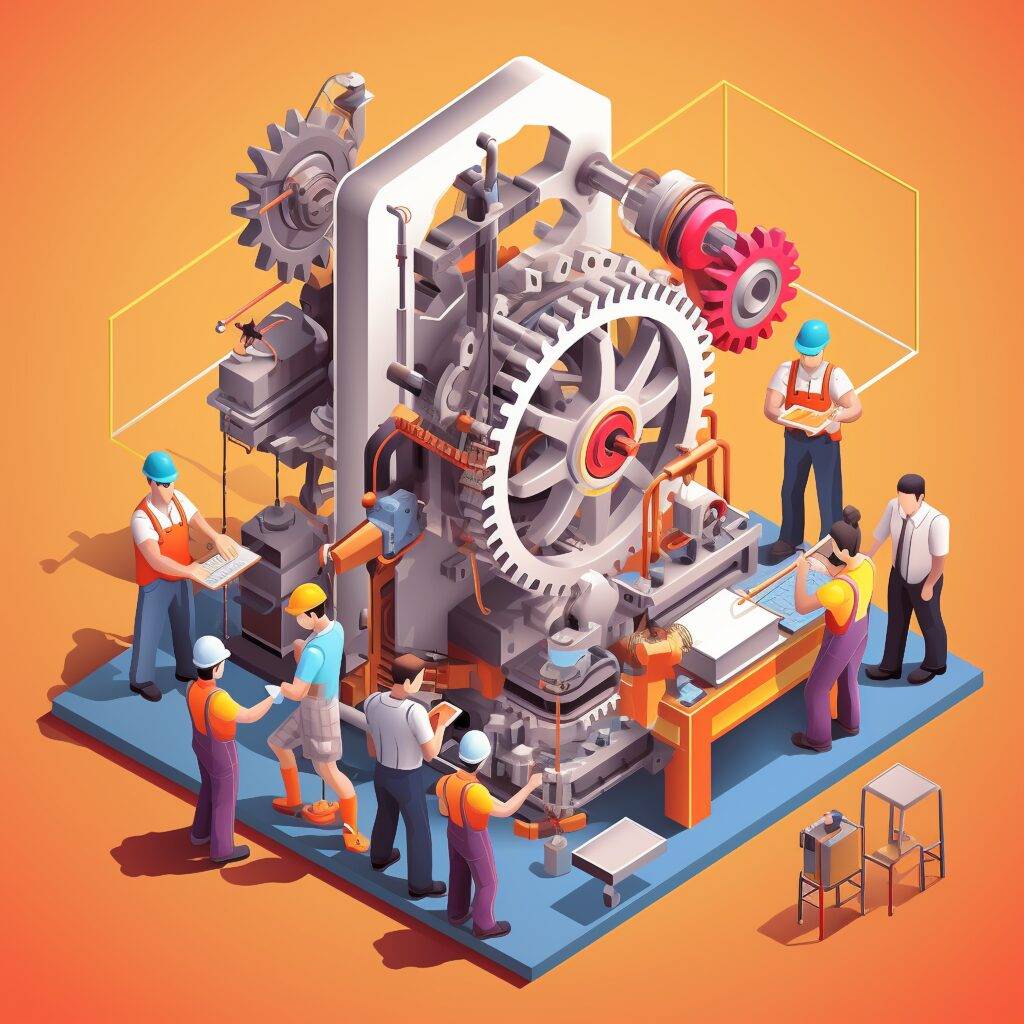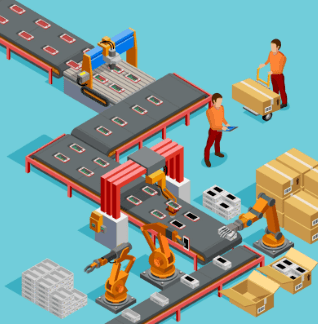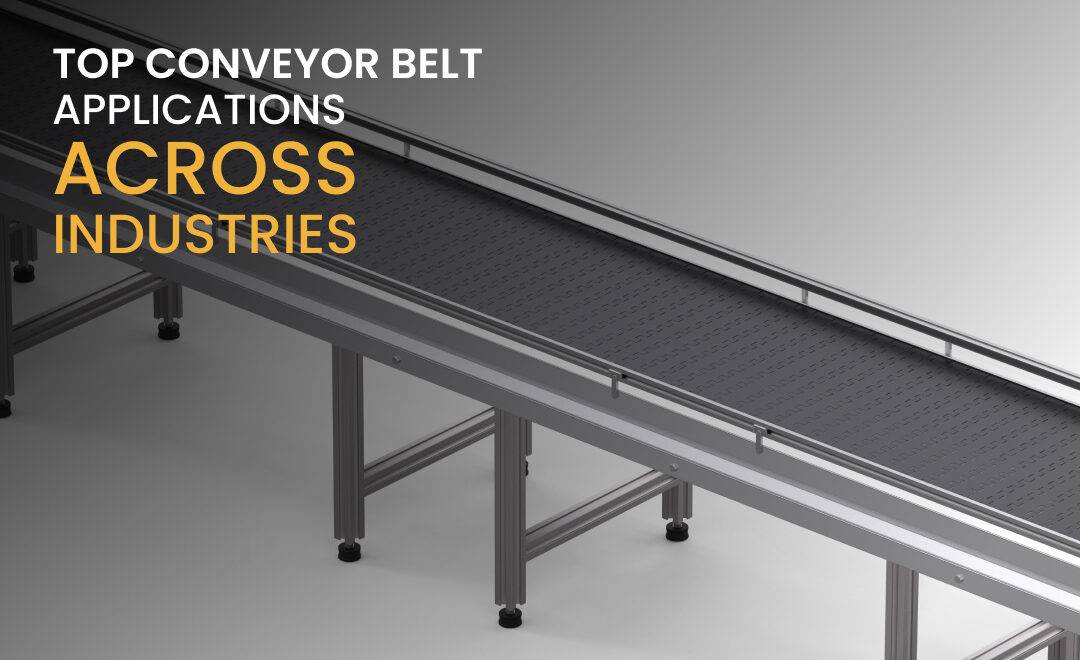
What are Rough Top Belts?

Rough top belts are specialized conveyor belts designed with a textured surface that provides enhanced grip and traction for the transportation of materials. This unique surface prevents slippage and ensures secure movement, making them ideal for handling bulk items or products that require stability during transit. Typically made from rubber or PVC, rough top belts are widely used in various industrial conveyor belt system applications, including agriculture, manufacturing, and logistics. Their design highlights the versatility of rough top belts within an industrial conveyor belt system, ensuring safe and efficient transport across industries. By incorporating rough top belts into an industrial conveyor belt system, businesses can achieve reliable, stable movement for products, enhancing both productivity and safety.
Importance of Rough Top Belts
Enhanced Traction
The textured surface of rough top belts provides excellent grip, preventing materials from sliding off during transport, especially on inclines or declines.
Versatility
These belts are suitable for a wide range of conveyor belt applications, from transporting agricultural products to handling heavy machinery parts, making them adaptable across industries.
Reduced Material Slippage
By minimizing the risk of slippage, rough top belts improve operational efficiency and reduce material wastage, contributing to cost savings.
Safety
The added traction helps ensure a safer working environment by reducing the chances of accidents caused by items slipping off conveyors.
Durability
Rough top belts are designed to withstand heavy loads and abrasive materials, ensuring a longer lifespan and lower maintenance costs compared to standard belts in various conveyor belt applications.
Hygienic Options
Many rough top belts are made from materials that are easy to clean and maintain, which is essential in industries like food processing and pharmaceuticals, where hygiene is a priority.
In summary, rough top belts play a critical role in enhancing material handling processes, ensuring safety, efficiency, and versatility in various conveyor belt applications.
Versatile Applications of Rough Top Belts Across Industries

Agriculture
In the agricultural sector, rough top belts are essential for conveying a variety of products, including grains, seeds, and fruits. The belts’ textured surfaces effectively prevent slippage, ensuring the safe and steady movement of agricultural produce from one location to another. This reliable transportation method enhances operational efficiency and helps maintain the quality of perishable goods, showcasing the importance of different types of conveyors in optimizing agricultural processes.
Packaging and Sorting
Packaging and sorting facilities benefit significantly from the use of rough top belts. These belts are employed to transport boxes, packages, and various materials throughout the sorting process. The textured surface of the belts minimizes the risk of items sliding off during transit, thereby reducing the chances of damage and enhancing overall productivity in the packaging process.
Manufacturing and Assembly Lines
In manufacturing and assembly lines, rough top belts facilitate the movement of components and finished products along the production workflow. The enhanced traction provided by these belts ensures that items remain in place during assembly or manufacturing operations, thus streamlining production processes and improving safety in the workplace. This highlights the significance of different types of conveyors in enhancing efficiency and reliability in manufacturing environments.
Material Handling
Rough top belts are widely used in general material handling applications, adeptly transporting bulk materials, containers, and products with irregular shapes. Industries such as mining, construction, and logistics frequently rely on these belts to convey materials effectively, ensuring seamless operations in environments that demand reliability and safety.
Wood and Timber Industry
The wood and timber industry utilizes rough top belts for transporting logs, planks, and other wooden products. Their textured surfaces grip the materials securely, preventing slippage on inclined conveyors or during loading and unloading. This reliability highlights the importance of different types of conveyors in maintaining workflow efficiency and safeguarding valuable timber products.
Recycling Facilities
In recycling facilities, rough top belts are vital for transporting a variety of materials, including paper, cardboard, plastics, and metals. The textured surfaces ensure a secure grip, preventing materials from slipping or becoming entangled during the recycling process. This capability is essential for maintaining a smooth and efficient recycling operation.
Textile Industry
The textile industry relies on rough top belts to convey fabrics, garments, and other textile products. The enhanced traction is particularly beneficial when handling rolls of fabric or transporting materials on inclined conveyor systems. By preventing slippage, these belts help maintain the integrity of delicate textile products throughout the manufacturing and distribution processes, showcasing the significance of different types of conveyors in this sector.
Food Processing
In the food processing industry, rough top belts are employed for conveying packaged food products, as well as items like cans and bottles. The textured surfaces of these belts not only prevent slippage but also contribute to a hygienic transportation process, which is vital in an industry that demands high standards of cleanliness and safety.
Mining and Quarrying
Rough top belts are indispensable in the mining and quarrying industries for transporting bulk materials such as ores, gravel, and minerals. The textured surfaces provide the necessary grip, especially in inclined conveyors used in these applications. This reliability is crucial for the safe and efficient transport of heavy materials.
Bottling and Beverage Industry
In bottling plants and the beverage industry, rough top belts facilitate the transport of bottles and containers along production lines. The enhanced traction helps maintain a stable flow of bottles, ensuring efficient operations and reducing the risk of spillage or damage, illustrating the importance of various types of conveyor belt in industry.
Types of Conveyor Belts in Industry

Belt conveyors are vital in various industries, known for their efficiency in transporting materials over long distances. Here’s a concise overview of the different types of conveyor belt in industry.
Flat Belt Conveyors
The most common type, featuring a flat surface for smooth material transport. Ideal for handling items of various sizes, they are widely used in manufacturing and packaging.
Modular Belt Conveyors
Made of interconnected plastic modules, these conveyors offer flexibility in layout and are easy to repair. They excel in food processing and packaging where hygiene is paramount.
Incline/Decline Belt Conveyors
Designed to move materials at angles, these conveyors transport products between different facility levels. Their sloped design keeps items secure during transit.
Cleated Belt Conveyors
Featuring raised cleats that prevent material spillage, these conveyors are perfect for bulk items on inclines. Frequently utilized in agriculture, mining, and recycling sectors.
Pipe Belt Conveyors
Shaped into a closed pipe configuration, these conveyors minimize dust and spillage. Ideal for transporting bulk materials over long distances, they address environmental concerns.
Heavy-Duty Belt Conveyors
Built to handle large loads, these robust conveyors are used in mining and construction. Their reinforced design withstands the demands of transporting heavy materials.
Chain Belt Conveyors
Utilizing linked chains, these conveyors transport heavy and abrasive items effectively. They are commonly found in automotive and metalworking industries for demanding applications.
Vertical Belt Conveyors
Designed for compact spaces, these conveyors move materials vertically. They efficiently transport products between different levels using belts or elevators.
Food Grade Belt Conveyors
Meeting strict hygiene standards, these conveyors ensure safe transportation of food products. They can be configured as flat, modular, or incline systems based on needs.
Specialty Belt Conveyors
Custom-designed for specific applications, these conveyors incorporate unique features like magnetic belts or high-temperature designs. They provide tailored solutions for diverse sectors.
In summary, understanding the types of conveyor belt in industry can help businesses select the right system for their operational needs, improving efficiency and productivity. With numerous types of conveyor belt in industry available, each serves a unique purpose to meet diverse material handling requirements. Therefore, evaluating the specific types of conveyor belt in industry is essential for optimizing material transport processes.
Conclusion
The versatility of rough top belts across various applications of belt conveyors underscores their critical importance in industries where preventing material slippage and ensuring reliable operations are paramount. For businesses seeking enhanced traction, partnering with rubber conveyor belt suppliers can be a key decision that not only improves efficiency but also contributes to the safety and integrity of transported goods. Investing in high-quality rough top belts through trusted rubber conveyor belt suppliers can significantly enhance operational productivity, particularly in applications of belt conveyors where reliability is essential. Lakhotia, one of the leading rubber conveyor belt suppliers, provides top-notch rough top belt solutions, ensuring businesses can rely on optimal performance and safety in their operations, specifically tailored for a range of conveyor applications.


